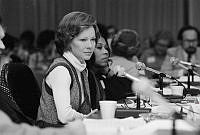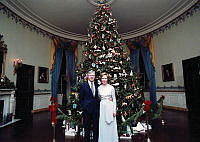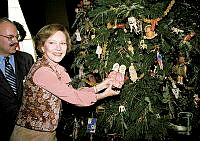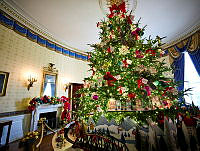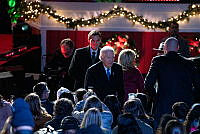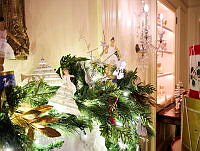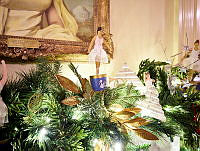Martha Washington

Born on June 2, 1731, Martha Dandridge was raised by a prominent family in New Kent County, Virginia. She was taught to read and write at a young age, which developed into a lifelong passion for all kinds of literature such as novels, magazines, and scripture. As a member of the planter class, Martha also learned the customs and etiquette required to move about seamlessly through Virginia society.
Her affluent neighbor, Daniel Parke Custis, won her heart and they were married on May 15, 1750. Seven years and four children later, Daniel passed away at the age of 45, making Martha not only a widow but also the wealthiest woman in the colony of Virginia.
Nearly two years later, Martha Dandridge Custis married George Washington on January 6, 1759. Their relationship was mutually beneficial; Martha was not only exceptionally wealthy but also eminently skilled in plantation management, maintaining the vast Custis estate, and overseeing the estate’s enslaved families. George’s exploits in the French and Indian War had made him a hero in the colonies, and his decision to retire from the military to take his seat in the House of Burgesses further enhanced his reputation. There was also a growing affection between the two, one that deepened over time as the Washingtons experienced war and peace together.
In a time when long-distance travel was both difficult and dangerous, Martha journeyed to Cambridge, Valley Forge, Philadelphia, and Morristown to support her husband and the soldiers in their disease-ridden winter encampments. Upon his ascent to the presidency, she joined him in New York and later Philadelphia. As our nation’s first “first lady,” Martha set important social and political precedents by building the stage of presidential hospitality with her warmth and conviviality. She held weekly receptions for male and female guests on Friday evenings, which were generally more informal and genial compared to the president’s Tuesday levees that were exclusively for men.
After leaving Philadelphia, George and Martha retired to Mount Vernon, where they spent the remainder of their days hosting guests, managing the estate, and raising Martha’s grandchildren. After George’s death in 1799, Martha burned their private correspondence, as was not uncommon during that time. Less than three years later, she passed away at Mount Vernon on May 22, 1802. While only three of their letters survived, Martha’s constant presence at George’s side—during the American Revolution, his presidency, and at Mount Vernon—illuminate the mutual reverence that they shared for one another as America’s first couple.
Click here to learn more about the enslaved household of the Washington family.












